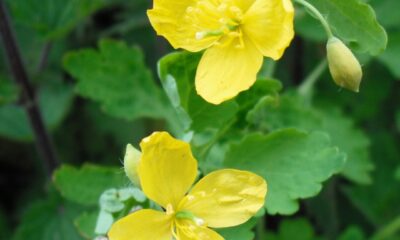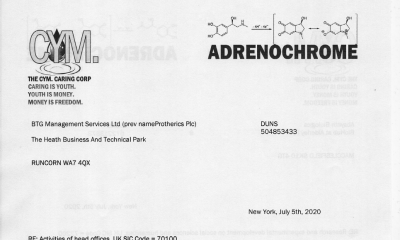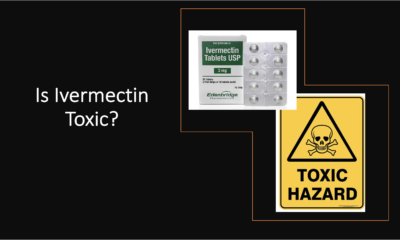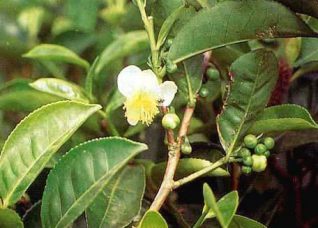AppliedChem 2022, 2(1), 1-29; https://doi.org/10.3390/appliedchem2010001
by Jason J. Blanck,Thomas M. Huebner,Alyssa M. Rolls,Josh S. Cornell andCandy S. Hwang *
Department of Chemistry, Southern Connecticut State University, 501 Crescent St., New Haven, CT 06515, USA
Author to whom correspondence should be addressed.
Academic Editor: Jason Love
- Received: 31 January 2022 / Revised: 15 February 2022 / Accepted: 18 February 2022 / Published: 22 February 2022
Abstract
Cat’s claw (Uncaria tomentosa (Willd. ex Schults) DC.), a plant that is exceptionally rich in phytochemicals, has been used for centuries by the indigenous people of South and Central America as a therapeutic and is currently widely exported for medicinal purposes. Extracts and individual components have shown considerable potential as antibacterials in the literature. The purpose of this review is twofold: first, to provide a substantiated, comprehensive collection of the known chemical constituents of U. tomentosa, including their detailed structures; second, to identify those components that offer some promise as antibacterials based on the research to date. Bacterial resistance to currently available antibiotics continues to increase and is widely recognized as an impending, potentially catastrophic, problem. There is research to suggest that U. tomentosa components may have antibacterial potential individually or synergistically with established antibiotics against microbes, including Borrelia burgdorferi, the causative agent of Lyme disease. It is our intention that this review will provide a valuable resource to investigators in search of new antimicrobials to meet the daunting challenge of antibiotic resistance.
Keywords: cat’s claw; antibacterial; phytochemicals; Borrelia burgdorferi; Lyme disease; alkaloids; polyphenols; terpenoids; medicinal plants; Uncaria tomentosa
1. Introduction
Medicinal plants and their natural products have been a source of important drug discoveries for decades. Since 1981, of the 1394 small-molecule drugs approved by the FDA, 930 of them were derived, to some extent, from a natural product, with fourteen being direct isolates from medicinal plant sources [1]. Many of these medicinal plants continue to be a primary therapeutic source for a large portion of the population in developing countries in Asia, South America, and Africa. The family Rubiaceae contains many of these plants, of which the genus Uncaria is prominent. This review focuses on Uncaria tomentosa (Willd. Ex Schults) DC., commonly referred to as “cat’s claw”, a plant that is native to South and Central America. The name of this woody vine was derived from the long, cat claw-like thorns protruding from the stem at its leaf junctions. The phytochemical composition of the plant has been the subject of many studies that pre-date this review [2,3,4,5,6,7,8,9,10,11,12], with one of these studies purporting more than 50 phytochemicals originating from the plant [13].
The interest in the specific phytochemical composition of U. Tomentosa comes from the plant’s long history of medicinal use by indigenous people in the region. Peruvian tribes such as the Ashaninka, Aguarurna, Cashibo, and Shipibo have used the plant for centuries to treat a multitude of ailments. Documentation from these cultures have indicated its use as a therapeutic for allergies, arthritis, asthma, diabetes, cancer, bacterial and viral infections, and other medicinal uses [14]. Scientific investigations into U. tomentosa extracts and constituents have uncovered a range of biological activities, such as antioxidant, anti-inflammatory, antimicrobial, antiviral, and immunomodulating activity [11,12,13].
Of the biological activities and potential medicinal purposes, this review focuses on its antibacterial properties. As a traditional medicine, U. tomentosa has been documented in wound treatment, indicating potential as an antibacterial agent [14]. Recent investigations of the plant and its extracts have produced in vitro evidence of antibacterial activity [15,16,17,18,19]. Antimicrobial activity has been observed against both the latent and active forms of the bacterium Borrelia burgdorferi, the bacterium responsible for Lyme disease [20,21]. Lyme disease is a tick-borne ailment brought on by the introduction of Borrelia burgdorferi to a host through a tick bite. Recent Centers for Disease Control (CDC) investigations have indicated that as many as 300,000 Americans are affected by Lyme disease every year [22,23]. Improved antibiotic therapies capable of not only treating the initial symptoms of B. burgdorferi infections, but also preventing and treating persistent infections are needed. The in vitro anti-borrelia efficacy demonstrated by U. tomentosa warrants an investigation into the possibility of identifying the constituent or a combination of constituents responsible for this effect.
To date, several reviews have been published providing general information on the genus Uncaria, including U. tomentosa, which contain focused, but limited, information on constituents and/or bioactivity [11,12,13]. In addition, none of these reviews have focused specifically on U. tomentosa constituents and their applications as antibacterial agents. The purpose of this review is to present a comprehensive collection of molecular structures from U. tomentosa, as well as consolidate research and literature regarding these components’ potential as antibacterial candidates. The information provided in this review will hopefully highlight promising candidates for the possible development or isolation of antibacterial agents from the species U. tomentosa, and specifically those related to anti-borrelia efficacy.
References:
https://www.mdpi.com/2673-9623/2/1/1/htm


 Alternative Health2 years ago
Alternative Health2 years ago
 Life Force Network2 years ago
Life Force Network2 years ago
 Alternative Health1 year ago
Alternative Health1 year ago
 Life Force Network2 years ago
Life Force Network2 years ago
 Alternative Health2 years ago
Alternative Health2 years ago
 Military2 years ago
Military2 years ago



















